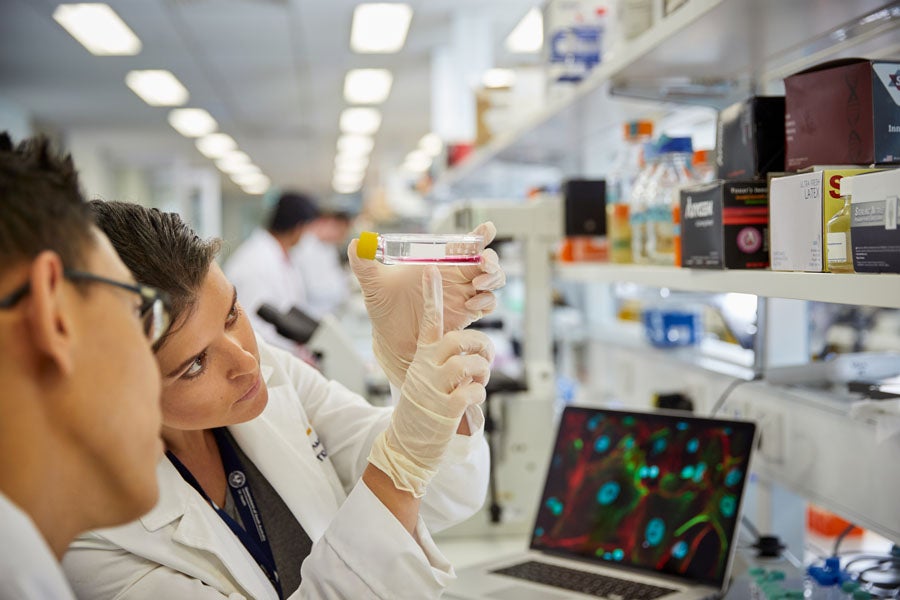Sunscreen research and facts

Each year, thousands of Australians develop skin cancer, and the number of treatments continues to rise.
When your skin is exposed to UV radiation, damage such as sunburn can happen quickly, increasing the chance developing of skin cancer later in life.
In fact, over exposure to UV is responsible for up to 95% of melanomas.
Regular sunscreen use is one of the most effective ways to prevent melanoma and non-melanoma skin cancers.
The facts and evidence explained
Australia has the highest rates of skin cancer in the world. While many Australians know sunburn increases skin cancer risk, it’s important to also know that skin damage often happens without visible burns. Here’s some key facts:
- 2 in 3 Australians will be diagnosed in their lifetime, and around 2,000 people die from skin cancer each year.
- There were over a million treatments for squamous and basal cell carcinoma skin cancers in 2023 – that’s more than 100 skin cancer treatments every hour.
- The costs to the Federal Government and the community from basal and squamous cell carcinomas are predicted to continue to increase in the future.
The evidence is clear though – regular sunscreen use helps prevent melanoma and squamous cell carcinoma.
Australians aged 18-40 years who were regular users of sunscreen in childhood reduced their risk of developing melanoma by 40 percent, compared to those who rarely used sunscreen.
How do I find the most accurate information?
It can be confusing when there is conflicting information online about sunscreens.
However, to make things easy, here are the key ways to help you know and recognise if the information you are looking at online or on social media is trustworthy:
- The source – Is it reputable? Have you seen it before? Are other reputable sources saying the same thing? Is it clear who is providing the information? Check the “About Us” section.
- The reviewers – Has the information been reviewed by experts with qualifications specifically related to skin cancer, sunscreen testing, therapeutic products or ingredients?
- The date – When was the information last reviewed? Ideally, it should be within the last 2-3 years.
- The claims – Is the website or source promoting something with unrealistic claims? If it sounds too good to be true, it probably is.
Alongside Cancer Council experts, voices you can trust include:
- Australasian College of Dermatologists
- Therapeutic Goods Administration (TGA)
- SunSmart
- The Australian Medical Association
- The Royal Australian College of General Practitioners
Sun damage happens over time – every day you protect your skin, you lower your risk of skin cancer in the future.
Our commitment to evidence-based cancer prevention
Cancer Council has led skin cancer prevention for decades, using rigorous research to inform recommendations with evidence you can trust.
Cancer Council Australia research published in the Australian and New Zealand Journal of Public Health showed that in 2010,
Australians prevented more than 1700 cases of melanoma and 14,000 cases of non-melanoma skin cancer thanks to regular sunscreen use over the previous decade."
You can feel confident knowing that all sunscreens sold in Australia are approved by the TGA.
Cancer Council relies on peer-reviewed, evidence published in credible, independent journals, including:
- Skin cancer prevention and sunscreens
- Effectiveness, compliance and application of sunscreen for solar ultraviolet radiation protection in Australia
The latest research on sun protection
An Australian first survey, funded by the Cancer Councils of Australia and conducted by the Australian Bureau of Statistics (ABS), examined the sun protective behaviours of more than 8,500 Australians during November 2023 and February 2024.
It revealed that:
- Just over half (53.9%) of Australians are using three or more forms of sun protection when exposed to the sun during peak UV times.
- Nearly 2 in 5 (38.1%) Australians used sunscreen on most days during late spring and summer when daily sunscreen use is recommended.
Sally BlaneToo much UV exposure is the leading cause of skin cancer. Since sun damage builds up over time, your risk increases as you get older – but you can still take steps today to protect your skin and lower your risk."
Chair of Cancer Council’s National Skin Cancer Committee, 2025
Why sun protection matters
Even short amounts of sun exposure can cause UV damage that adds up over time.
Sun exposure can lead to damage to skin cells and sunburn. Your skin remembers this damage and can appear as skin cancers later on, so make sunscreen part of your SunSmart routine.
Adjunct Associate Professor Craig SinclairUnprotected sun exposure when the UV is greater than 3 can harm the skin and increase the risk of skin cancer later in life. There is very good evidence that protecting our skin from harmful UV can make a significant difference to reducing our skin cancer risk."
Director of the World Health Organization Collaborative Centre for UV Radiation from Cancer Council Victoria, 2025
Protect yourself when the UV Index is 3 and above
Remember – sunscreen is just one part of sun protection!
Start with clothing that blocks the UV – then combine with sunscreen, hats, shade, and sunglasses for the best everyday protection.
Learn more about Cancer Council’s mission and how to stay SunSmart.
See why daily sun protection is essential.
